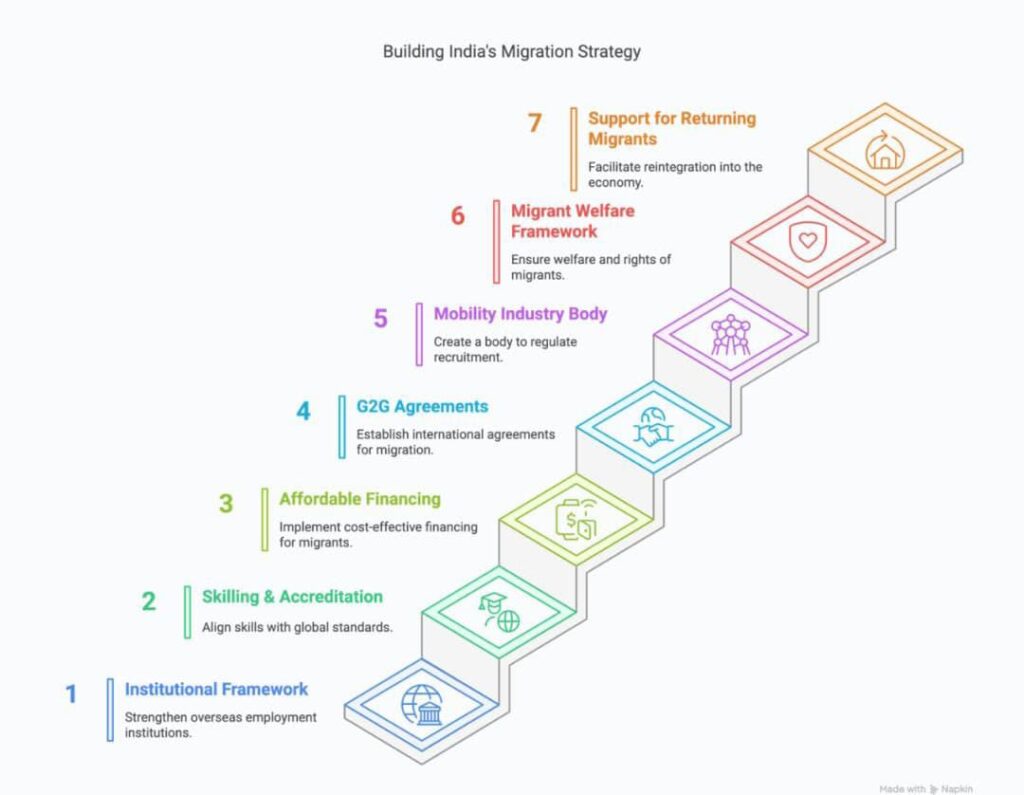Context: Amid global labour crisis, the government should focus on setting up an institutional framework to drive overseas employment.
India’s Demographic Advantage: Becoming the Global Talent Powerhouse
India’s Untapped Potential in Global Labour Markets
India boasts a young population and a rich pool of human capital, positioning it to play a pivotal role in addressing global labour shortages. Despite this, only 1.3% of India’s population migrates internationally, far below countries like Mexico (8%), the Philippines (5%), and Bangladesh—indicating a vast untapped opportunity.
Annual Remittances: $125 billion—3% of India’s GDP, surpassing earnings from any single merchandise export sector.
Global Labour Demand:
2030: Estimated shortfall of 40–50 million workers in high-income countries.
2040: Shortfall could grow to 120–160 million, particularly in healthcare, engineering, construction, teaching, and transport.
Europe’s Labour Gap: 73% in truck drivers, 50%+ in engineers, nurses, and construction workers.
Vision: “India for the World” Approach
India should complement ‘Make in India’ with a bold vision of “India as a Global Talent Hub”, matching its domestic skill surplus with global demand.
Developmental Impact: A 10% rise in remittances can cut poverty by 3.5% in low-income countries.
Curb Illegal Migration: Legal, structured pathways reduce risks, enhance India’s global image, and address concerns in destination countries over permanent immigration.
Strategic Steps to Realise the Vision
1. Institutional Framework for Overseas Employment
Strengthen MEA’s migration division.
Set up state-level migration bodies to:
Verify recruiters
Ensure migrant welfare
Support reintegration
Establish migration desks in embassies for real-time support.
2. Global-Standard Skilling and Accreditation
Embed foreign language training and international job skills in vocational programs.
Sign mutual recognition agreements (MRAs) with key economies.
Promote joint certifications with global institutions for credibility.
3. Affordable Financing for Migration
Reduce migration costs (Rs 1–2 lakh for GCC, Rs 5–10 lakh for Europe).
Explore the Philippines’ Employer-Pay model, where employers cover pre-departure costs.
4. G2G Agreements with Destination Countries
Prioritize visa liberalisation, qualification recognition, and worker integration.
Learn from the Philippines, which has G2G deals with over 65 countries.
5. Establish a Mobility Industry Body
Create a national-level mobility industry body to:
Regulate recruitment agencies
Ensure ethical standards
Address industry fragmentation
6. Robust Migrant Welfare Framework
Follow ILO guidelines to ensure:
Fair wages
Legal support
Safe housing and working conditions
Access to healthcare and grievance redress
7. Reintegration of Returning Migrants
Leverage returnees’ global exposure and skills for local development.
Provide re-skilling, entrepreneurship support, and placement assistance.
Conclusion: A Global Role Rooted in Local Strength
With the right systems, policies, and partnerships, India can transition from a talent-rich nation to a trusted global workforce provider, boosting both development at home and labour resilience abroad.

Conclusion: By nurturing talent mobility, India can convert its youth bulge into a global economic and diplomatic strength, boost remittances and enhance India’s international influence and reputation.
